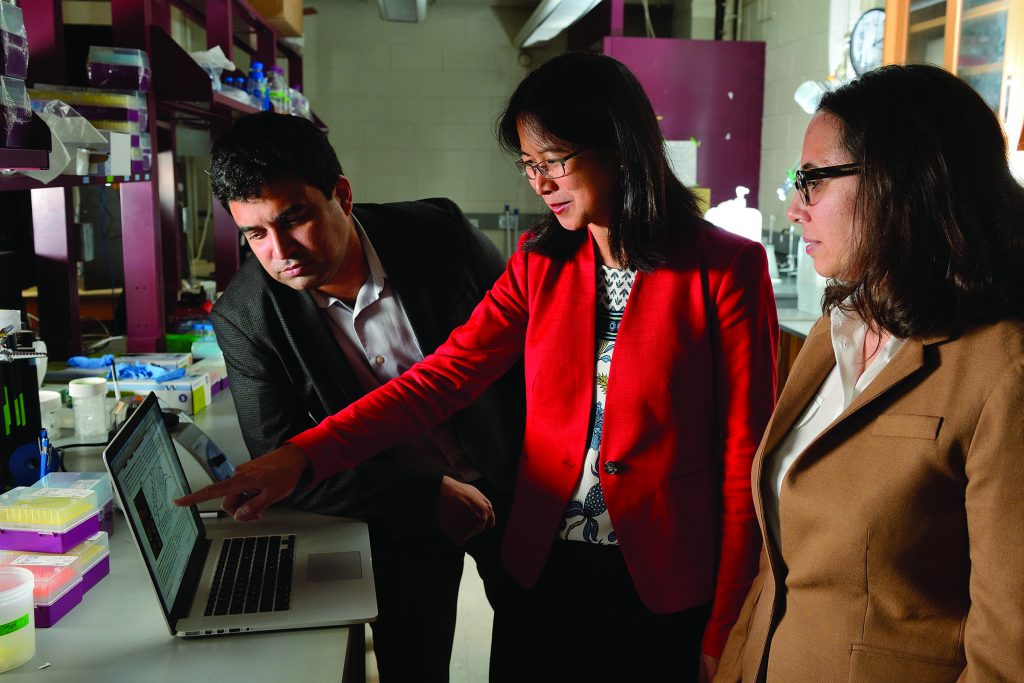
Biochemical engineers at Johns Hopkins University have used sequences of DNA molecules to induce shape changing in water- based gels, demonstrating a new tactic to produce soft robots and “smart” medical devices that do not rely on cumbersome wires, batteries, or tethers.
The research advance was detailed in Science and supervised by three Whiting School of Engineering faculty members: David Gracias, professor of chemical and biomolecular engineering; Rebecca Schulman, assistant professor of chemical and biomolecular engineering with a joint appointment in computer science; and Thao “Vicky” Nguyen, a Johns Hopkins expert in the mechanics of polymers and biomaterials and the Marlin U. Zimmerman Jr. Faculty Scholar in the Department of Mechanical Engineering.
The team members reported that their process used specific DNA sequences called hairpins to cause a centimeter-sized hydrogel sample to swell to 100 times its original volume. The reaction was then halted by a different DNA sequence, dubbed a “terminator hairpin.”
This approach could make it possible to weave moving parts into soft materials. The researchers have suggested that their process could someday play a role in creating smart materials, metamorphic devices, complex programmed actuators, and autonomous robots with potential marine and medical applications.
To control how shape-shifting occurs in different parts of the target hydrogel, the researchers took a cue from the computer industry. They employed a photo-patterning technique similar to the one used to make tiny but intricate microchips. Various biochemical patterns embedded in different regions of the gel were designed to respond to specific DNA instructions to cause bending, folding, or other responses.
“DNA sequences can be thought of as an analog to computer code,” says Gracias. “Just as computer software can direct specific tasks, DNA sequences can cause a material to bend or expand in a certain way at a specific site.”




